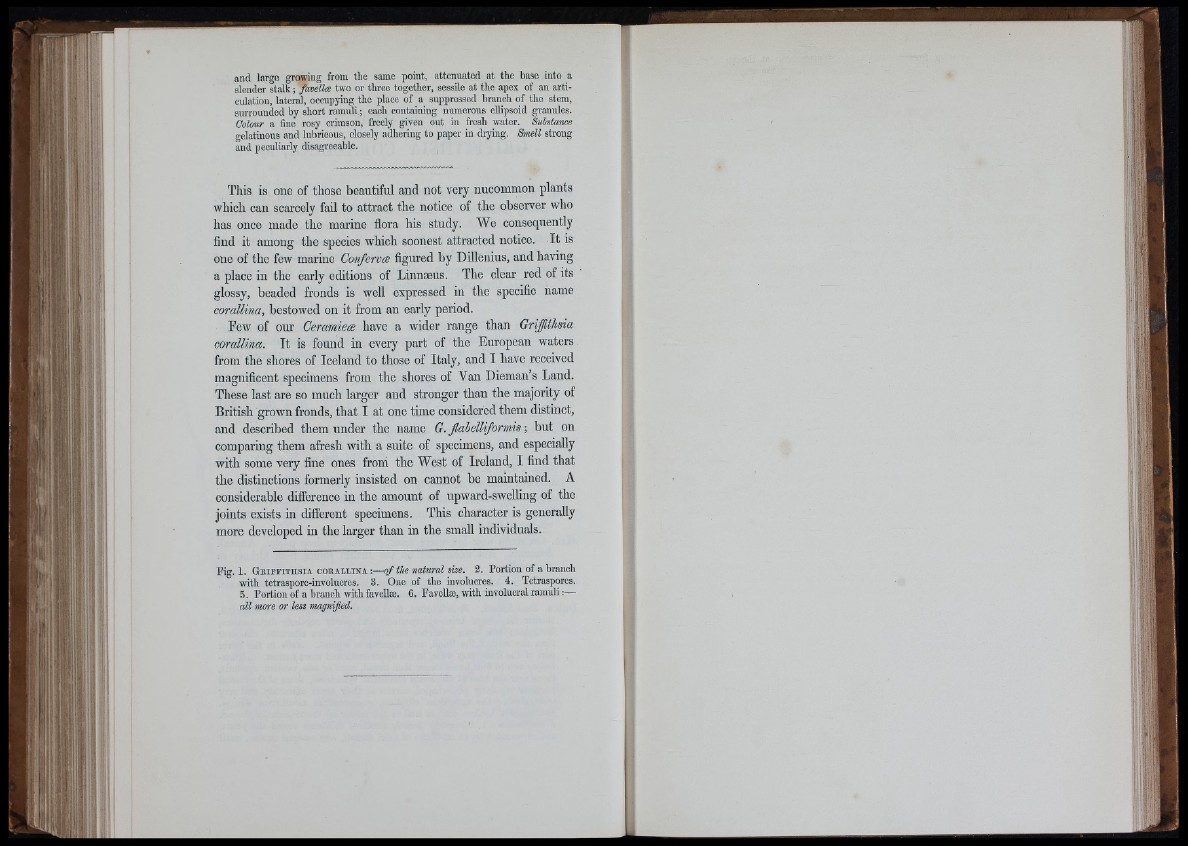
and largo growing from the same point, attenuated at the base into a
slender stalk ; favellce two or three together, aessüe at the apex of an articulation,
lateral, occupying the place of a suppressed branch of the stem,
surrounded by short ramuli,; each containing numerous ellipsoid granules.
Colour a fine rosy crimson, freely given out in fresh water. Substance
gelatinous and lubricous, closely adhering to paper in drying. Smell strong
and peculiarly disagreeable.
Iii!!::
This is one of those beautiful and not very nucommon plants
which can scarcely fail to attract the notice of the observer who
has once made the marine flora his study. We consequently
find it among the species which soonest attracted notice. It is
one of the few marine Confervæ figured by Dillenius, and having
a place in the early editions of Linnæus. The clear red of its
glossy, beaded fronds is well expressed in the specific name
corallina, bestowed on it from an early period.
Few of oiu" Ceramieæ have a wider range than Griffithsia
coraUina. It is found in every part of the European waters
from the shores of Iceland to those of Italy, and I have received
magnificent specimens from the shores of Van Dieman’s Land.
These last are so much larger and stronger than the majority of
British grown fronds, that I at one time considered them distinct,
and described them under the name G. flabelliformis ; but on
comparing them afresh with a suite of specimens, and especially
with some very fine ones frond the West of Ireland, I find that
the distinctions formerly insisted on cannot be maintained. A
considerable difference in the amount of upward-swelhng of the
joints exists in different specimens. This character is generally
more developed in the larger than in the small individuals.
Fig. 1. Ge iit ith s ia CORALLINA ;— o f the natural dze. 2. Portion of a branch
with tetraspore-involucres. 3. One of the involucres. 4. Tetraspores.
5. Portion of a branch with favellæ. 6. FaveUæ, with involucral ramuli :—
all more or U
:l